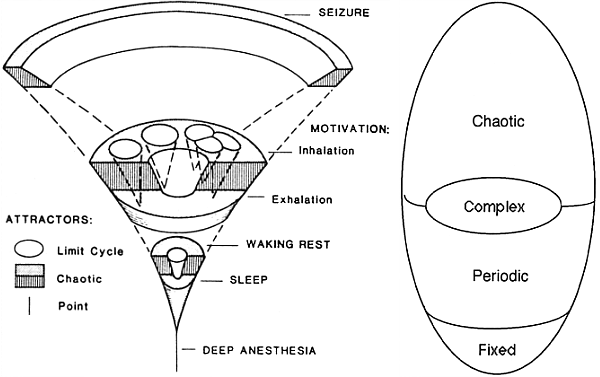|
On the right is Langton's view of information movement
in complex dynamical systems such as cellular automata. It
represents the four states a complex system can obtain.
The bottom is the regime where information is frozen; nothing can
live there. Above that is a somewhat more flexible regime where
behavior such as crystal growth can be seen; still, the limited
movement of information cannot support life. At the very top,
information moves so freely that its structure cannot be
maintained; the regime is too chaotic to support life. Only
in that center "sweet spot" can information be stable enough
to support a message structure and loose enough to transmit
messages. [1]
|

